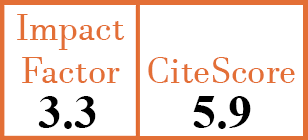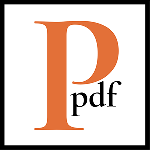Full Papers
Vagal nerve stimulation and fibromyalgia: an additional therapeutic option
G. Dolcini1, M. Favretti2, D. Franculli3, G. Buoncuore4, G. Pellegrino5, M. Di Carlo6, P. Sarzi-Puttini7, F. Conti8, C. Iannuccelli9, M. Di Franco10
- Department of Molecular Medicine, Sapienza University of Rome, Italy.
- Department of Molecular Medicine, Sapienza University of Rome, Italy.
- Department of Medicine , Acquapendente Civil Hospital, Italy.
- Department of Internal Clinical, Anaesthesiologic and Cardiovascular Sciences, Sapienza University of Rome, Italy.
- Department of Rheumatology, IRCCS Galeazzi-Sant'Ambrogio Hospital, Milan; and Department of Biochemical and Clinical Sciences, University of Milan, Italy.
- Rheumatology Unit, Carlo Urbani Hospital, Università Politecnica delle Marche, Jesi, Ancona, Italy.
- Department of Rheumatology, IRCCS Galeazzi-Sant'Ambrogio Hospital, Milan; and Department of Biochemical and Clinical Sciences, University of Milan, Italy.
- Department of Internal Clinical, Anaesthesiologic and Cardiovascular Sciences, Sapienza University of Rome, Italy.
- Rheumatology Unit, AOU Policlinico Umberto I, Sapienza University of Rome, Italy. c.iannuccelli@policlinicoumberto1.it
- Department of Internal Clinical, Anaesthesiologic and Cardiovascular Sciences, Sapienza University of Rome, Italy.
CER18863
2025 Vol.43, N°6
PI 1095, PF 1104
Full Papers
Free to view
(click on article PDF icon to read the article)
PMID: 40576705 [PubMed]
Received: 25/04/2025
Accepted : 02/06/2025
In Press: 27/06/2025
Published: 27/06/2025
Abstract
OBJECTIVES:
Fibromyalgia (FM) is a chronic syndrome characterised by widespread pain, sleep, mood and cognitive disturbances, asthenia and muscle stiffness. The aetiopathogenesis of FM is not fully understood, but autonomic nervous system dysfunction could play a fundamental role in the development of chronic pain and could alter serum levels of neuro-inflammatory mediators like Brain Derived Neurotrophic Factor (BDNF). Transcutaneous vagus nerve stimulation (tVNS) is a non-invasive bioelectronic technique that increases parasympathetic nervous system activity and there is growing evidence that it can modulate nociception and improve mood and sleep quality. The aim of this pilot study was to evaluate the efficacy of auricular vagal neuromodulation therapy (AVNT™) in reducing disease severity and improving sleep quality of FM patients; secondly, to evaluate fluctuations in serum BDNF levels after treatment.
METHODS:
Eighteen patients with FM, underwent AVNT™ treatment consisting of 30-minute stimulation, 5 times a week, for 4 consecutive weeks.
RESULTS:
After two weeks of treatment, an early reduction in the WPI score (p=0.03) was detected, then confirmed at week 4 (p=0.004). At week 4, significant reduction either in the revised Fibromyalgia Impact Questionnaire (rFIQ) total score (p=0.02), rFIQ general health (p=0.002) and symptoms (p<0.001) components and the Pittsburgh Sleep Quality Index (PSQI) level (p=0.02) was also detected. No significant changes in BDNF levels were found either after two or four weeks of treatment.
CONCLUSIONS:
In conclusion, our preliminary results show that the treatment with AVNT™ reduced disease severity and improved sleep quality in FM patients.


